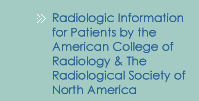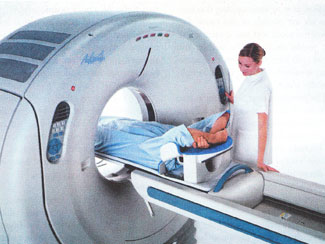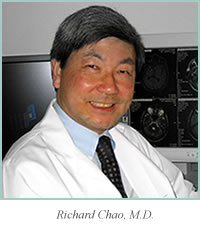Health News - Around Alhambra - Alhambra Chamber of Commerce Combo PET/CT imaging finds hidden cancers The doctor just told you that your biopsy results came back positive for cancer. "What's next?" you bravely ask. The doctor says "PET/CT". That test will tell us whether the lung cancer is all alone or has spread to other parts of your body. The treatment depends on whether it has spread and where to. Many people know about CT scan, but what is PET/CT? PET/CT is a new non-invasive radiological test, combining the functional information of nuclear medicine and the detailed mapping of CT scanning. In PET (positron emission tomography), a small amount of the radioactive drug, Fluorine-18 labeled glucose (FDG), is injected into the body. Fast growing cancer cells feed predominantly on sugars like glucose and absorb more of it than normal cells. Therefore, the cancer cells take up more of the injected radioactive FDG glucose compared to the adjacent normal cells, and then "light up" on the PET scanner images. Indeed, the more metabolically active the cancer, the "hotter" the tumor looks. The CT scanner takes a series of x-rays to generate highly detailed, 3-dimensional pictures of the body. By highlighting the active cancer and placing that "hotspot" into a 3D body map, the combined PET/CT scan images identifies the metabolically active cancer, and maps its size, shape and location(s) in the body. PET/CT can find cancer spreading and hiding in other organs and skeleton. This is critical information to determine the cancer treatment options. In the hypothetical patient above, if the lung cancer is small and isolated, then surgical removal is usually the best treatment choice. If the cancer has spread to other organs or distant lymph nodes, then surgery is futile. Chemo- and radiation therapy are then needed to fight the cancer. PET/CT information can thus help avoid the pain and high costs of unnecessary surgery, and patients can get a better chance at a good outcome. PET/CT also helps in monitoring the success or failure of treatment in many other cancers, including breast, colon, head and neck, testicular, melanoma, lymphoma, pancreas, cervical and sarcomas. PET/CT is very expensive and technologically complex, requiring expertly trained technologists and nuclear radiologists (physicians) to properly perform the studies. In LA County, there are only a few, full-time, PET/CT facilities, including the medical centers at UCLA, USC, Cedars Sinai, Huntington Memorial and Pacific Medical Imaging and Oncology Center in Alhambra. Richard Chao, M.D. is a board certified radiologist with 25 years experience, specializing in MRI and molecular imaging. He is the medical director of Pacific Medical Imaging and Oncology Center, located at 707 S. Garfield Ave., Suite B-001, Alhambra. Call (626) 227-2727 or visit www.PMIOC.com for more information.
|



